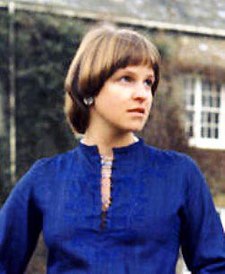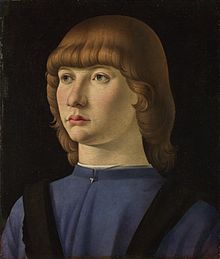
A hairstyle, hairdo, haircut or coiffure refers to the styling of hair, usually on the human head but sometimes on the face or body. The fashioning of hair can be considered an aspect of personal grooming, fashion, and cosmetics, although practical, cultural, and popular considerations also influence some hairstyles.
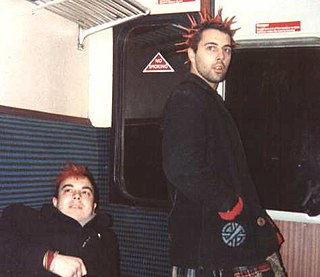
Punk fashion is the clothing, hairstyles, cosmetics, jewellery, and body modifications of the punk counterculture. Punk fashion varies widely, ranging from Vivienne Westwood designs to styles modeled on bands like The Exploited to the dressed-down look of North American hardcore. The distinct social dress of other subcultures and art movements, including glam rock, skinheads, greasers, and mods have influenced punk fashion. Punk fashion has likewise influenced the styles of these groups, as well as those of popular culture. Many punks use clothing as a way of making a statement.
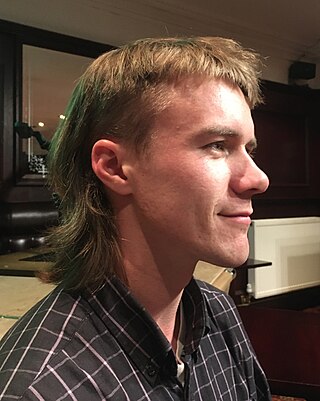
The mullet is a hairstyle in which the hair is cut shorter at the front, top and sides, but is longer at the back.

A bob cut, also known as a bob, is a short to medium length haircut, in which the hair is typically cut straight around the head at approximately jaw level, and no longer than shoulder-length, often with a fringe at the front. The standard bob cut exposes the back of the neck and keeps all of the hair well above the shoulders.

A bowl cut is a simple haircut where the front hair is cut with a straight fringe and the rest of the hair is left longer, the same length all the way around, or else the sides and back are cut to the same short length. It is named so because in medieval times, when it was popular in Europe, a bowl would be placed on the head and then used as a cutting guide to trim the hair.

The beehive is a hairstyle in which long hair is piled up in a conical shape on the top of the head and slightly backwards pointing, giving some resemblance to the shape of a traditional beehive. It is also known as the B-52 due to a resemblance to the distinctive nose of the Boeing B-52 Strategic Bomber. The 1980s band The B-52's, took their name from the hairstyle which was worn by members Cindy Wilson and Kate Pierson.

Fashion in the 1990s was defined by a return to minimalist fashion, in contrast to the more elaborate and flashy trends of the 1980s. One notable shift was the mainstream adoption of tattoos, body piercings aside from ear piercing and, to a much lesser extent, other forms of body modification such as branding.

2000s fashion is often described as a global mash up, where trends saw the fusion of vintage styles, global and ethnic clothing, as well as the fashions of numerous music-based subcultures. Hip-hop fashion generally was the most popular among young people of all sexes, followed by the retro inspired indie look later in the decade.

Fashion of the 1960s featured a number of diverse trends, as part of a decade that broke many fashion traditions, adopted new cultures, and launched a new age of social movements. Around the middle of the decade, fashions arising from small pockets of young people in a few urban centers received large amounts of media publicity, and began to heavily influence both the haute couture of elite designers and the mass-market manufacturers. Examples include the mini skirt, culottes, go-go boots, and more experimental fashions, less often seen on the street, such as curved PVC dresses and other PVC clothes.
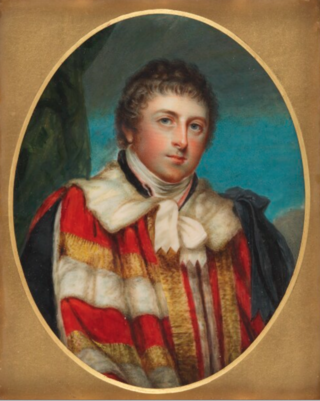
An eponymous hairstyle is a particular hairstyle that has become fashionable during a certain period of time through its association with a prominent individual.
The Rachel haircut, commonly known as simply "The Rachel", is an eponymous hairstyle popularized by American actress Jennifer Aniston. Named after Rachel Green, the character she played on the American sitcom Friends (1994–2004), Aniston debuted the haircut during the show's first season, and continued to wear it throughout its second season while the series was nearing peak popularity. Designed by Aniston's hairstylist Chris McMillan to repair her damaged hair and grow out her bangs, "The Rachel" is a voluminous shoulder-length haircut, with several distinct layers that frame and turn outwards from its wearer's face. It has been described as a variation on both the shag and bob haircuts.
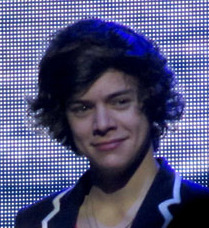
The wings haircut, also known the Mod haircut, Mop top, flippies, flow, Justin Bieber haircut, or skater hair is a popular hairstyle used in the skateboarding, surfer, mod, and preppy community. Typically long, the style can range from long and drooping below the eyes, to a shorter length. The haircut is typically wavy and, if straight, the length comes to halfway down the ears. Instead of lying on the wearer's ears, the hair flips up and comes straight out like an airplane wing, hence the name. The hairstyle was popular among men in the 1960s, 1970s, mid-late 2000s, early 2010s and 2020s.

The pompadour is a hairstyle named after Madame de Pompadour (1721–1764), a mistress of King Louis XV of France. Although there are numerous variations of the style for men, women, and children, the basic concept is having a large volume of hair swept upwards from the face and worn high over the forehead, and sometimes upswept around the sides and back as well.
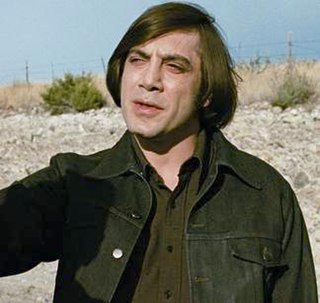
Anton Chigurh is a fictional character and the main antagonist of Cormac McCarthy's 2005 novel No Country for Old Men. In the 2007 film adaptation of the same name, he is portrayed by Javier Bardem.

A pixie cut is a short hairstyle, generally short on the back and sides of the head and slightly longer on the top, with very short bangs. It is a variant of a crop. The name is derived from the mythological pixie.

A shag cut is a hairstyle that has been layered to various lengths. It was created by the barber Paul McGregor. The layers are often feathered at the top and sides. The layers make the hair full around the crown, and the hair thins to fringes around the edges. This unisex style became popular after being worn by various celebrities, including Joan Jett, David Bowie, Mick Jagger, Rod Stewart, David Cassidy, Jane Fonda, Stevie Nicks and Florence Henderson in the early 1970s. During the 1990s, Jennifer Aniston popularized "The Rachel" hairstyle, and Meg Ryan wore a shag in the early 2000s. The haircut had a resurgence in popularity during the early 2020s.
The undercut is a hairstyle that was fashionable from the 1910s to the 1940s, predominantly among men, and saw a steadily growing revival in the 1980s before becoming fully fashionable again in the 2010s. Typically, the hair on the top of the head is long and is often parted on either the side or center, while the back and sides are buzzed very short. It is closely related to the curtained hair of the mid-to-late 1990s, although those with undercuts during the 2010s tended to slick back the bangs away from the face.
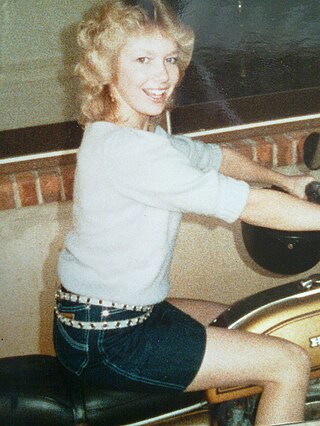
Hairstyles in the 1980s included the mullet, tall mohawk hairstyles, jheri curls, flattops, and hi-top fades, which became popular styles. Amongst women, large hair-dos, puffed-up styles, permanent waves, and softer cuts typified the decade. Big hair that was "often permed to achieve the desired volume" is especially associated with women of the mid 1980s as well as male rockstars of that era, especially of the glam metal genre. Television shows such as Dynasty helped popularize the high volume bouffant and glamorous image associated with it.
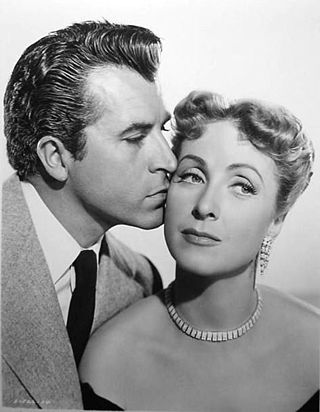
In the Western world, the 1950s were a decade known for experimentation with new styles and culture. Following World War II and the austerity years of the post-war period, the 1950s were a time of comparative prosperity, which influenced fashion and the concept of glamour. Hairstylists invented new hairstyles for wealthy patrons. Influential hairstylists of the period include Sydney Guilaroff, Alexandre of Paris and Raymond Bessone, who took French hair fashion to Hollywood, New York and London, popularising the pickle cut, the pixie cut and bouffant hairstyles.

A lob or long bob is a form of haircut and a variant of bob cut. The length is between long hair and a bob cut.
